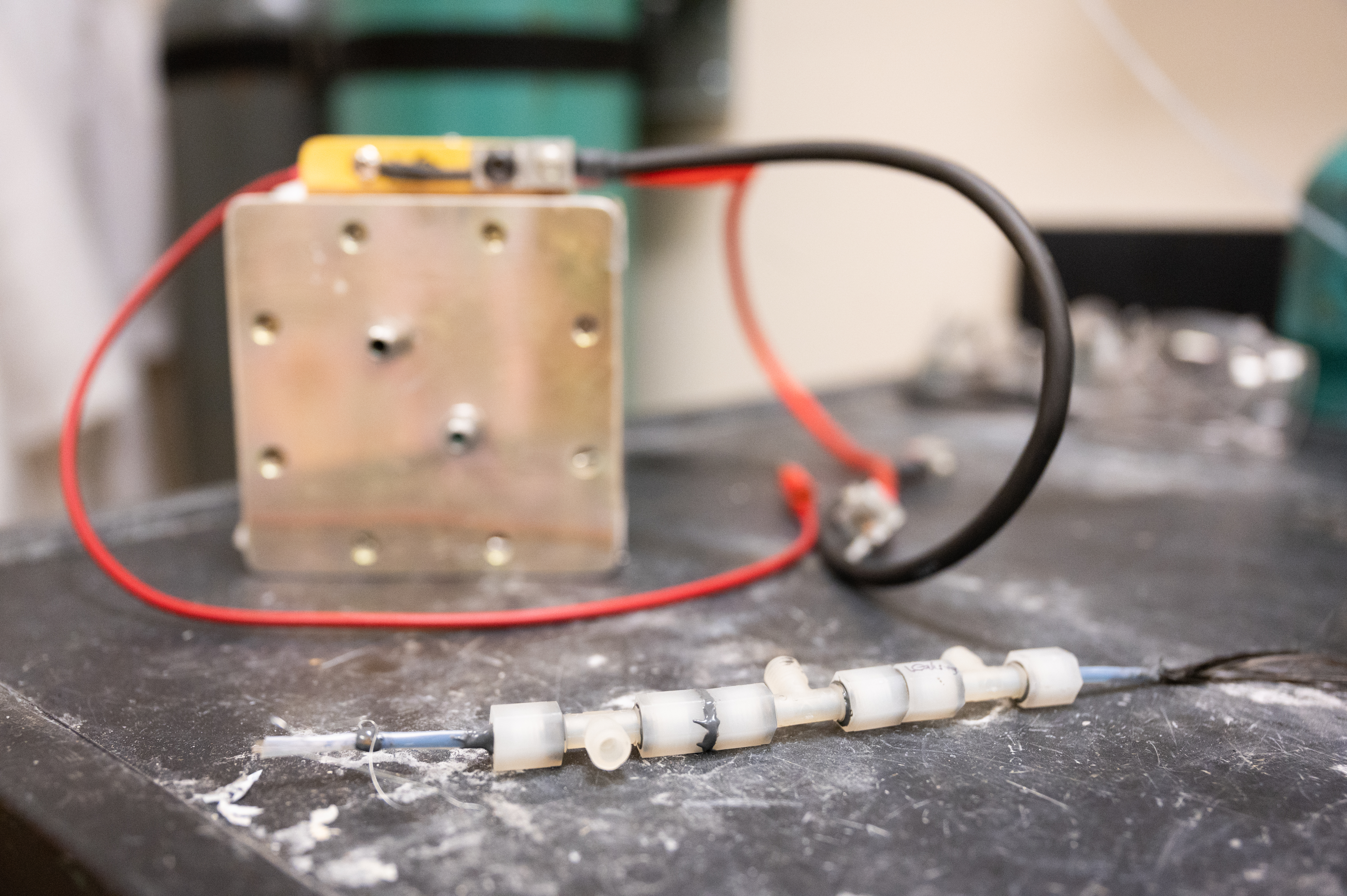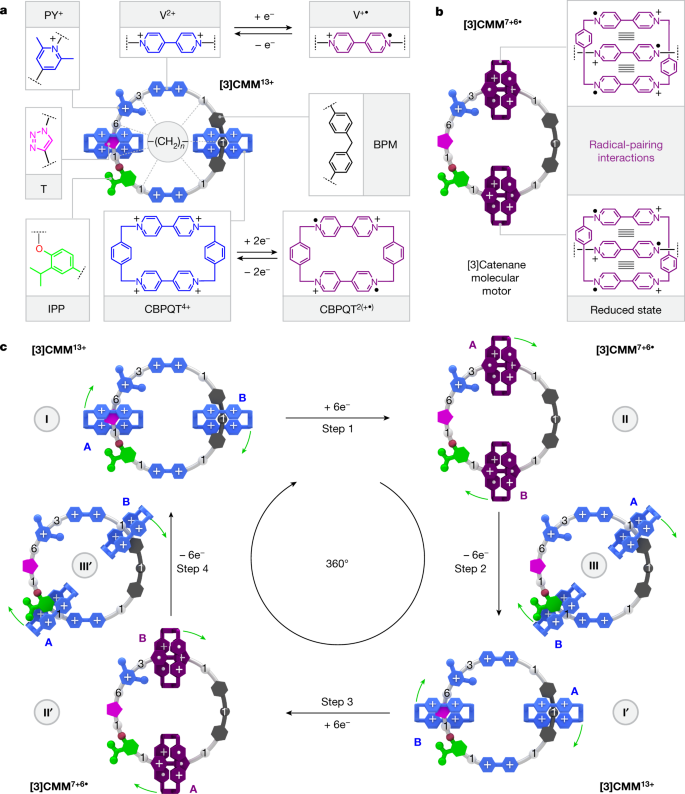2023-01 ジョージア工科大学
 Liu’s lab in the School of Chemical and Biomolecular Engineering (ChBE) developed a more compact flow battery cell configuration that reduces the size of the cell by 75%, and correspondingly reduces the size and cost of the entire flow battery.
Liu’s lab in the School of Chemical and Biomolecular Engineering (ChBE) developed a more compact flow battery cell configuration that reduces the size of the cell by 75%, and correspondingly reduces the size and cost of the entire flow battery.
ジョージア工科大学の研究チームは、この研究成果を論文として、米国科学アカデミー紀要に発表しました。
フロー電池の名前は、電子交換が行われるフローセルに由来している。従来の平面型電池は、大型の流量分配器やガスケットが必要で、サイズやコストが大きくなる一方で、全体的な性能は低くなっていた。また、セル自体も高価である。そこで研究者たちは、設置面積とコストを削減するために、フローセルの体積出力密度(W/L-of-cell)を向上させることに焦点を当てた。
そこで、化学物質の分離によく使われる、中空糸と呼ばれる繊維状のフィルター膜でできたサブミリメートル束状マイクロチューブラー(SBMT)膜という構成に着目した。この技術革新は、追加のサポートインフラを必要とせずにイオンが通過する膜全体の圧力を緩和することができる省スペース設計を有しています。
研究者たちは、膜間距離をほぼ100倍に短縮するSMBTを開発しました。この設計のマイクロチューブ膜は、大きな支持材を必要とせず、同時に電解質分配器として機能する。束ねられたマイクロチューブは、電極と膜の間の距離を短くし、体積出力密度を増加させる。この束ねるデザインは、フロー電池のポテンシャルを最大限に引き出すための重要な発見です。
研究者たちは、新しい電池構成を検証するために、バナジウム、臭化亜鉛、臭化キノン、ヨウ化亜鉛の4種類の化学物質を使用した。その結果、ヨウ化亜鉛が最もエネルギー密度が高く、住宅用として最も効果的であることがわかりました。ヨウ化亜鉛は、リチウムと比べても多くの利点があります。また、酸化亜鉛になり、酸に溶けるため、リサイクルが容易である。
ヨウ化亜鉛の化学反応により、この電池は220時間以上、またはオフピーク時の2,500サイクル以上動作させることができます。また、リサイクル電解液を使用することで、1キロワット時あたり800ドルから200ドル以下にコストを削減できる可能性もあります。
研究者たちはすでに商業化に取り組んでおり、バナジウムなど異なる化学物質を用いた電池の開発と、そのサイズのスケールアップに注力しています。スケールアップには、現在は繊維1本1本を手作業で行っている中空糸モジュールの製造を、自動化するプロセスを考え出すことが必要です。
SBMTセルは、電気分解や燃料電池など、さまざまなエネルギー貯蔵システムに応用することも可能です。この技術は、さまざまな用途において、先端材料やさまざまな化学物質で強化される可能性さえあります。
<関連情報>
- https://research.gatech.edu/researchers-create-smaller-cheaper-flow-batteries-clean-energy
- https://www.pnas.org/doi/10.1073/pnas.2213528120
超高容量サブミリメートルバンドル型マイクロチューブラフロー電池セル。 A submillimeter bundled microtubular flow battery cell with ultrahigh volumetric power density
Yutong Wu,Fengyi Zhang,Ting Wang,Po-Wei Huang,Alexandros Filippas,Haochen Yang, Yanghang Huang,Chao Wang,Huitian Liu,Xing Xie,Ryan P. Lively,Nian Liu
Proceedings of the National Academy of Sciences Published:January 3, 2023
DOI:https://doi.org/10.1073/pnas.2213528120
Significance
Due to an uneven renewable energy resource distribution and time-dependent fluctuation in energy generation, the harvest, storage, and delivery of renewable energy are crucial to match a rapidly growing demand. Flow batteries are a promising technology for large-scale energy storage and exhibit unparalleled advantages in scalability and design flexibility because of the spatially decoupled energy storage and power conversion units. However, commercial flow batteries are still based on cell configurations developed decades ago. The planar configuration exhibits a large cell size with bulky components for high performance, which results in low volumetric power density, high footprint and capital cost. Step-change decreases in cell size will enable reductions in flow battery capital costs and increase their competitiveness ingrid-level applications.
Abstract
Flow batteries are a promising energy storage solution. However, the footprint and capital cost need further reduction for flow batteries to be commercially viable. The flow cell, where electron exchange takes place, is a central component of flow batteries. Improving the volumetric power density of the flow cell (W/Lcell) can reduce the size and cost of flow batteries. While significant progress has been made on flow battery redox, electrode, and membrane materials to improve energy density and durability, conventional flow batteries based on the planar cell configuration exhibit a large cell size with multiple bulky accessories such as flow distributors, resulting in low volumetric power density. Here, we introduce a submillimeter bundled microtubular (SBMT) flow battery cell configuration that significantly improves volumetric power density by reducing the membrane-to-membrane distance by almost 100 times and eliminating the bulky flow distributors completely. Using zinc–iodide chemistry as a demonstration, our SBMT cell shows peak charge and discharge power densities of 1,322 W/Lcell and 306.1 W/Lcell, respectively, compared with average charge and discharge power densities of <60 W/Lcell and 45 W/Lcell, respectively, of conventional planar flow battery cells. The battery cycled for more than 220 h corresponding to >2,500 cycles at off-peak conditions. Furthermore, the SBMT cell has been demonstrated to be compatible with zinc–bromide, quinone–bromide, and all-vanadium chemistries. The SBMT flow cell represents a device-level innovation to enhance the volumetric power of flow batteries and potentially reduce the size and cost of the cells and the entire flow battery.



